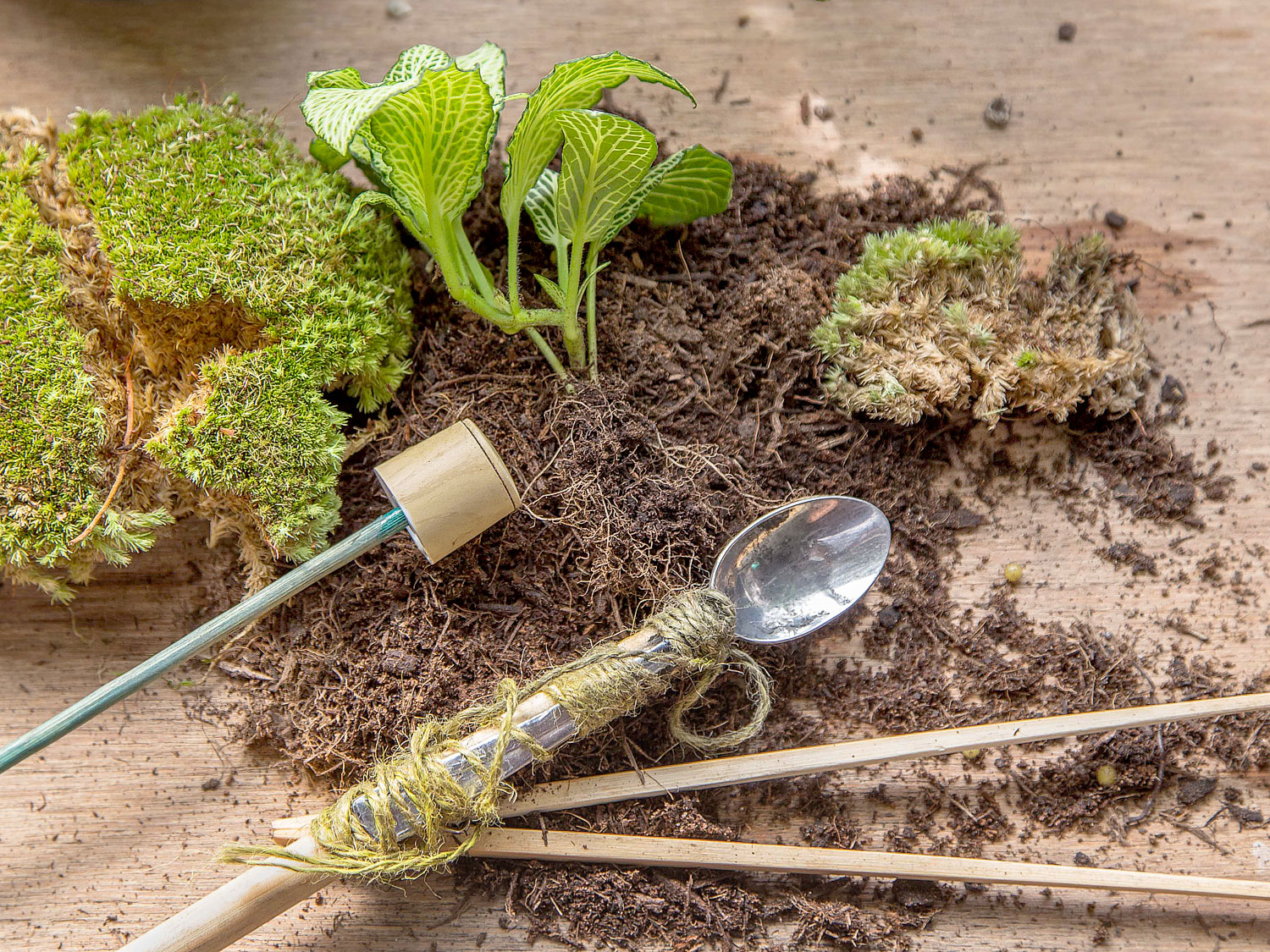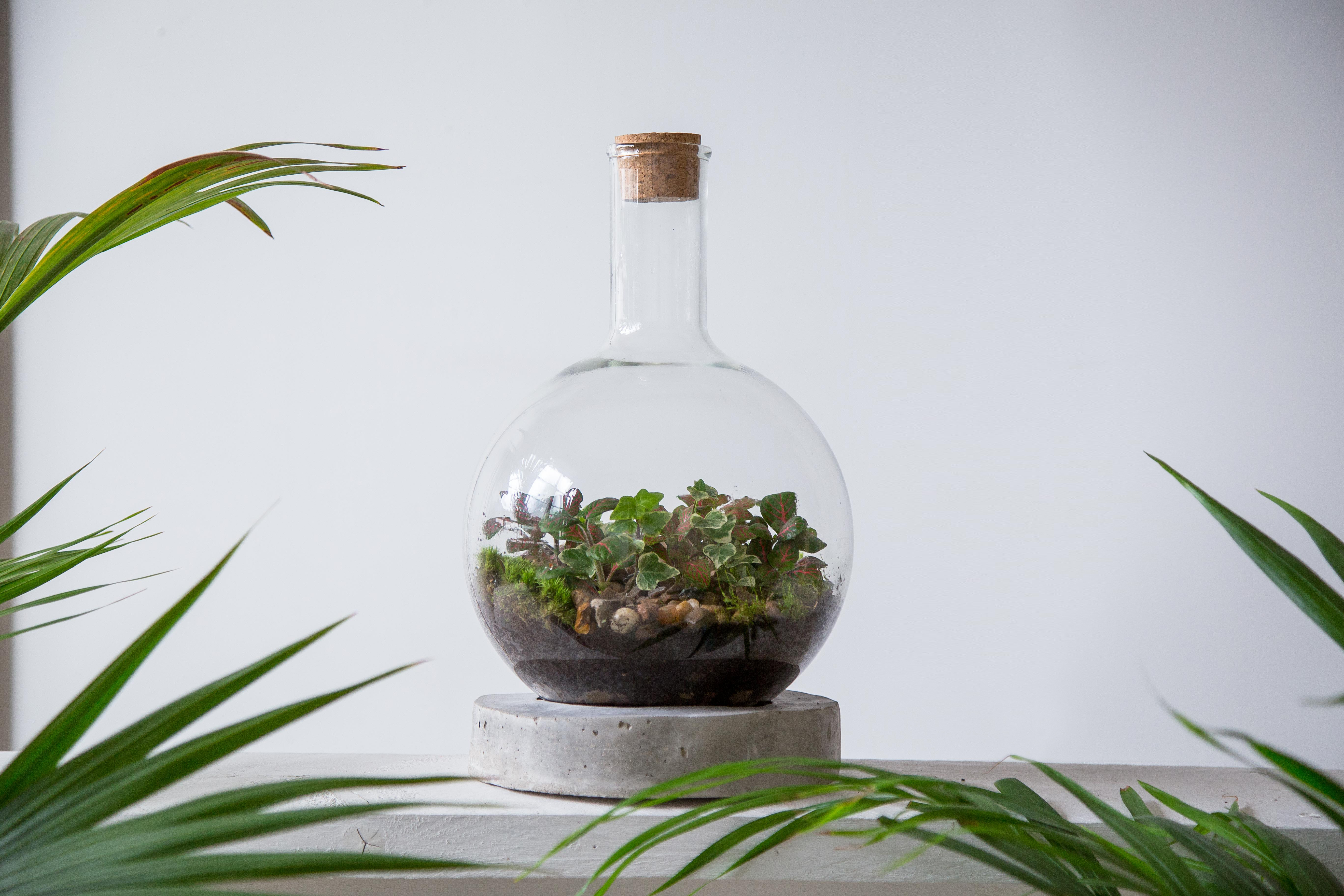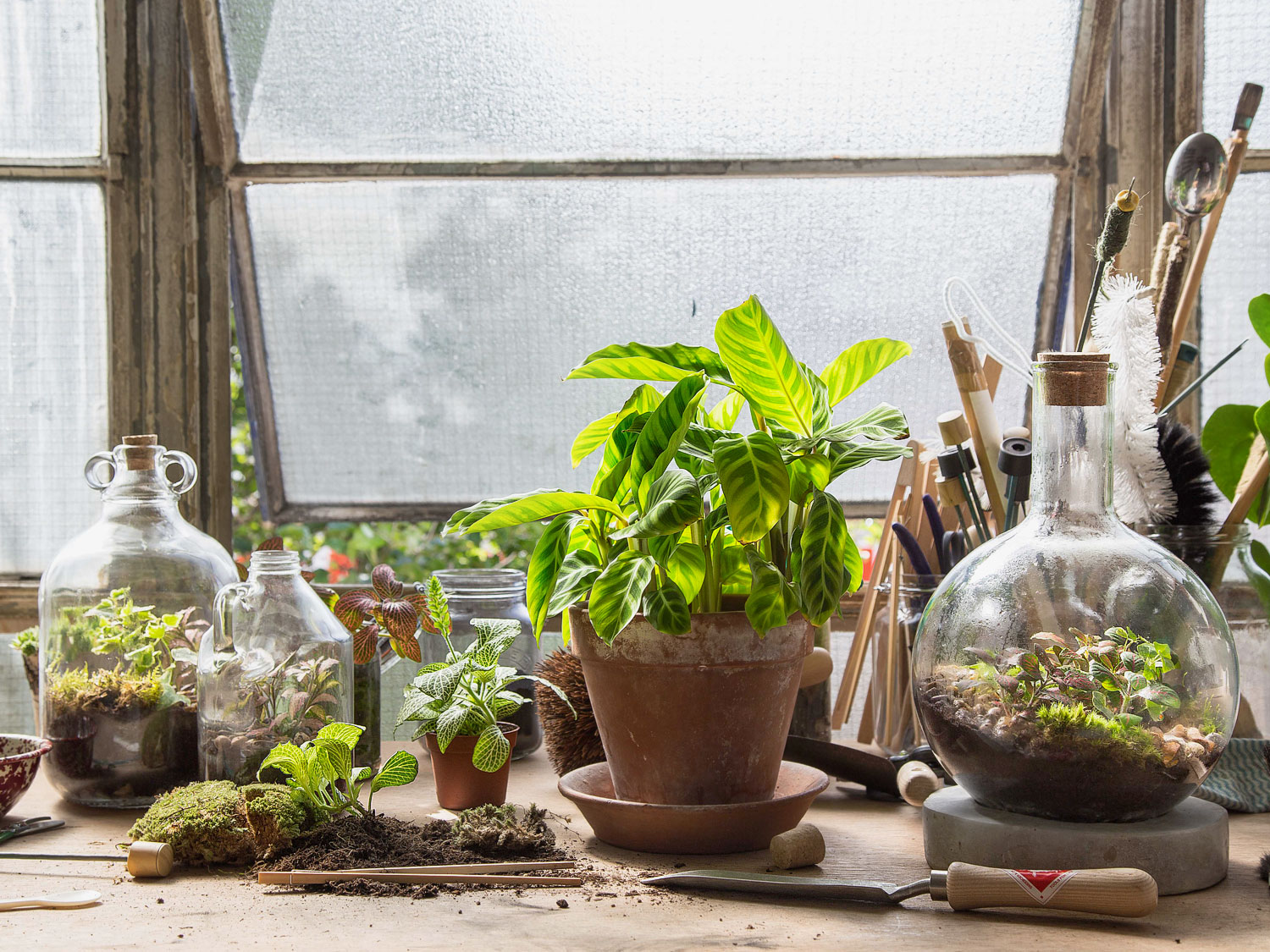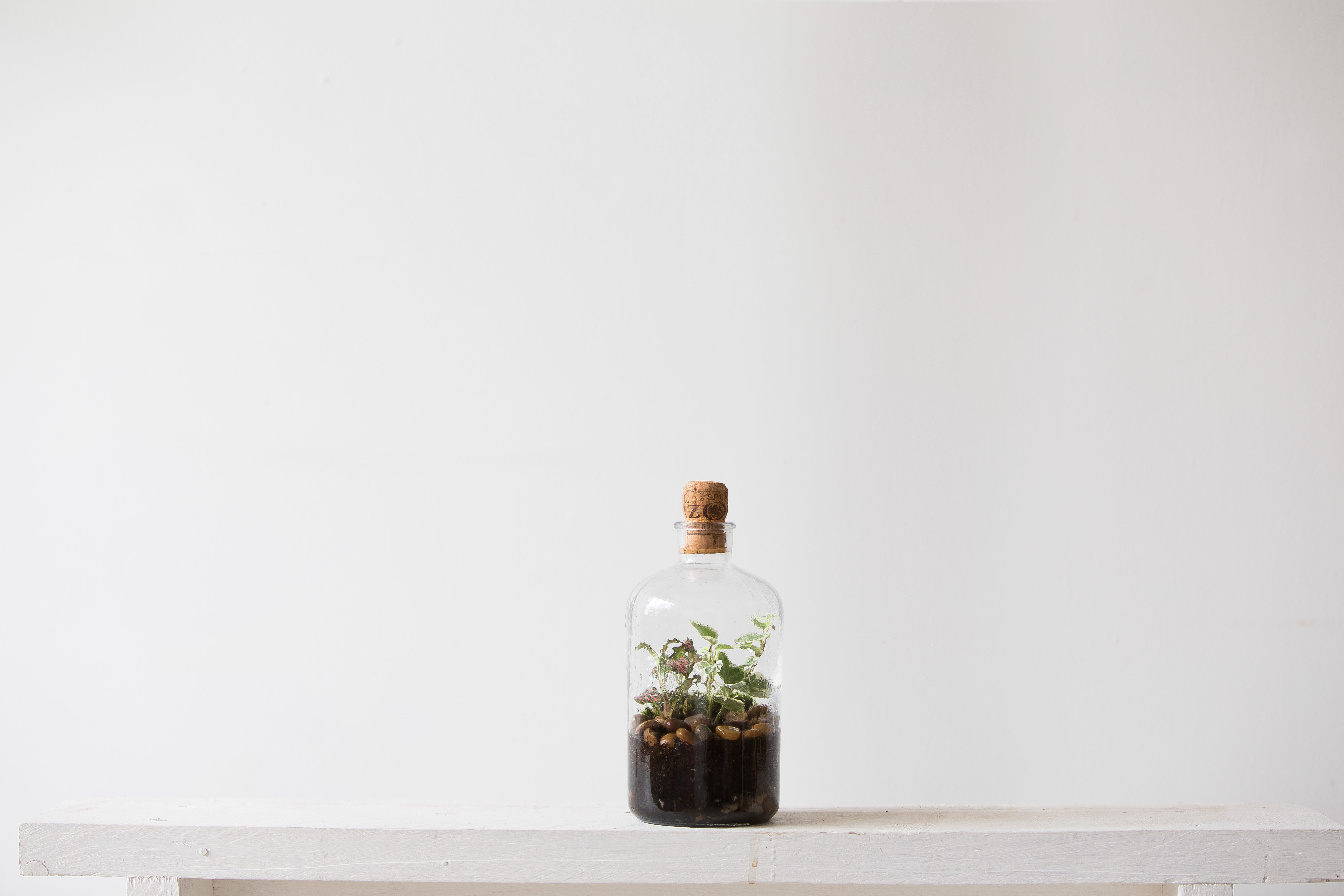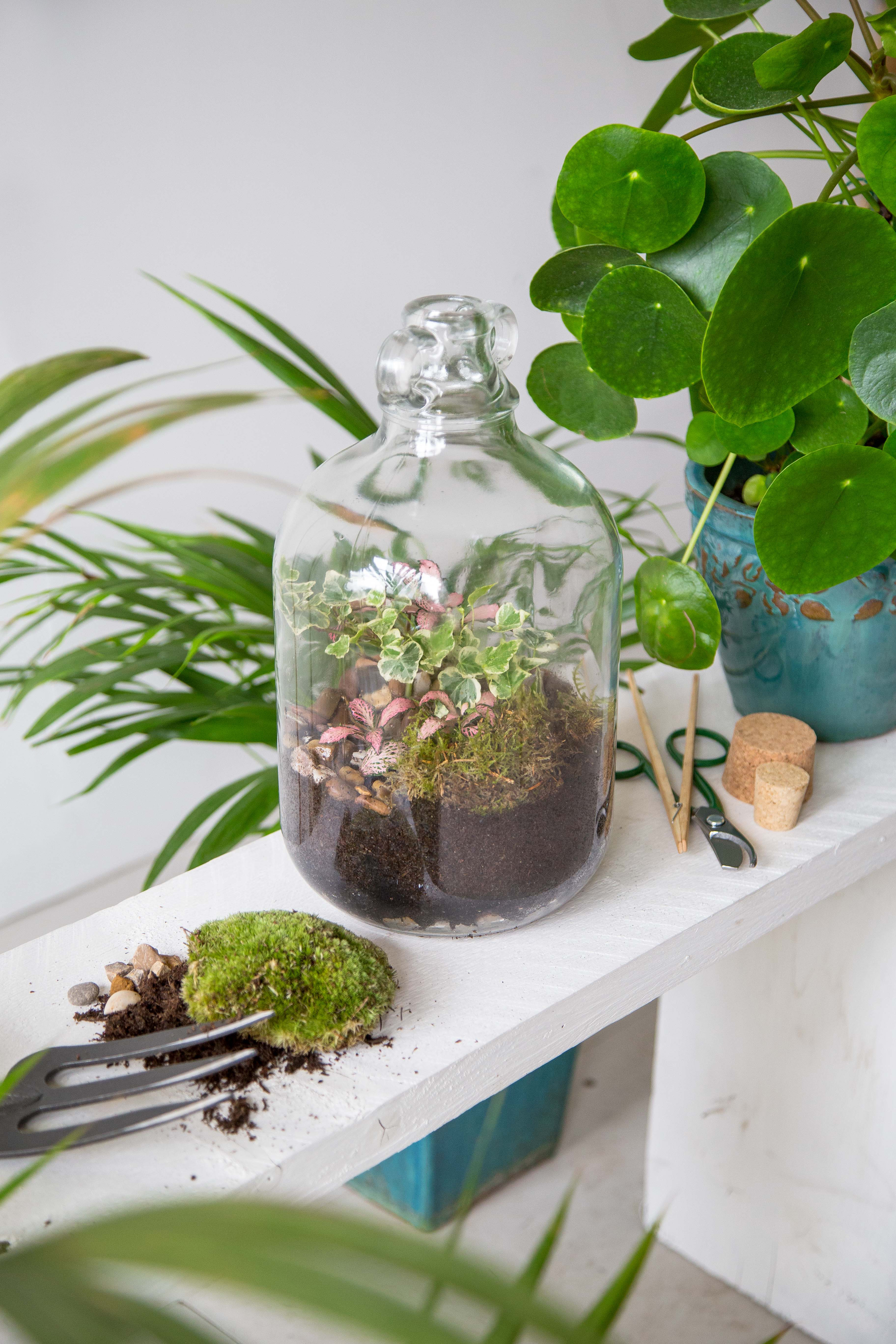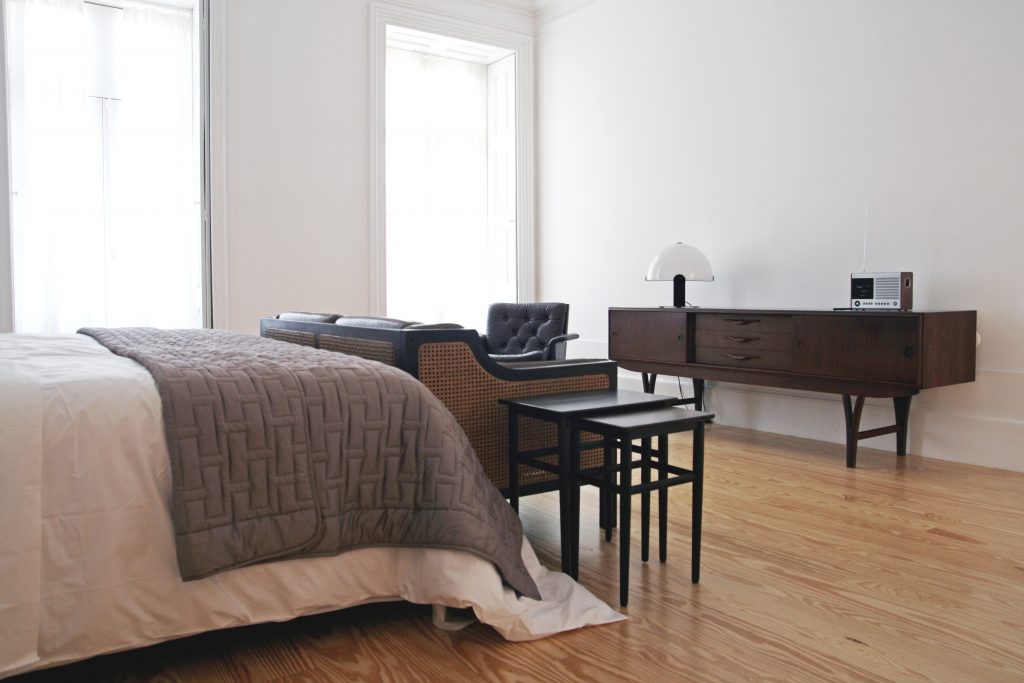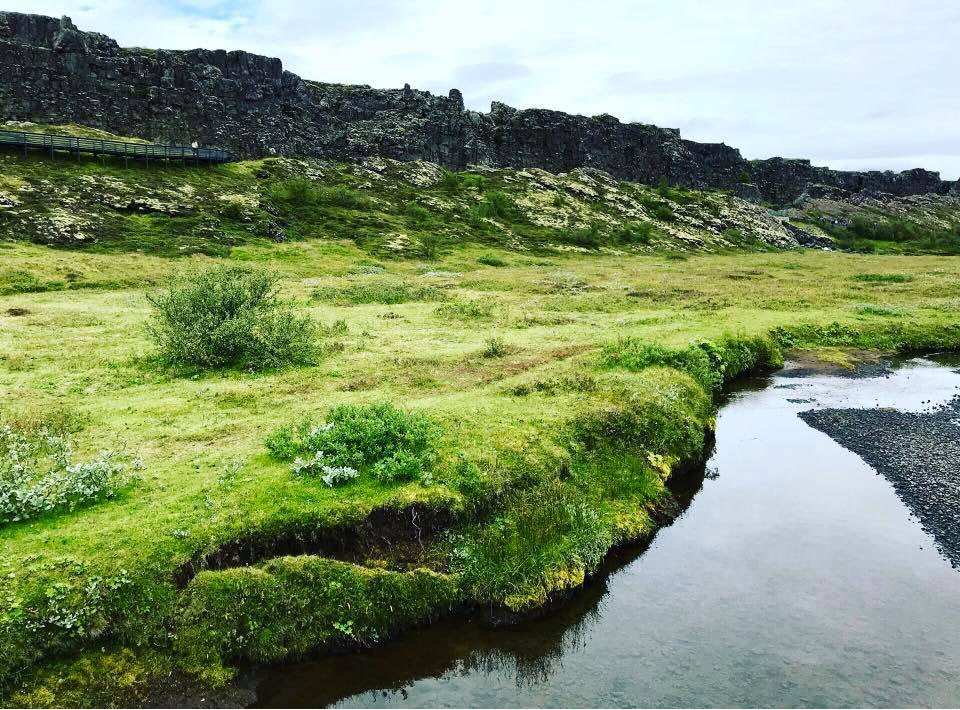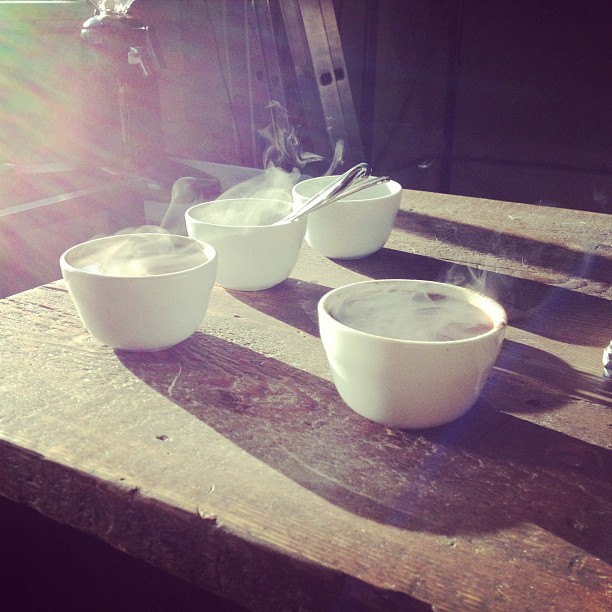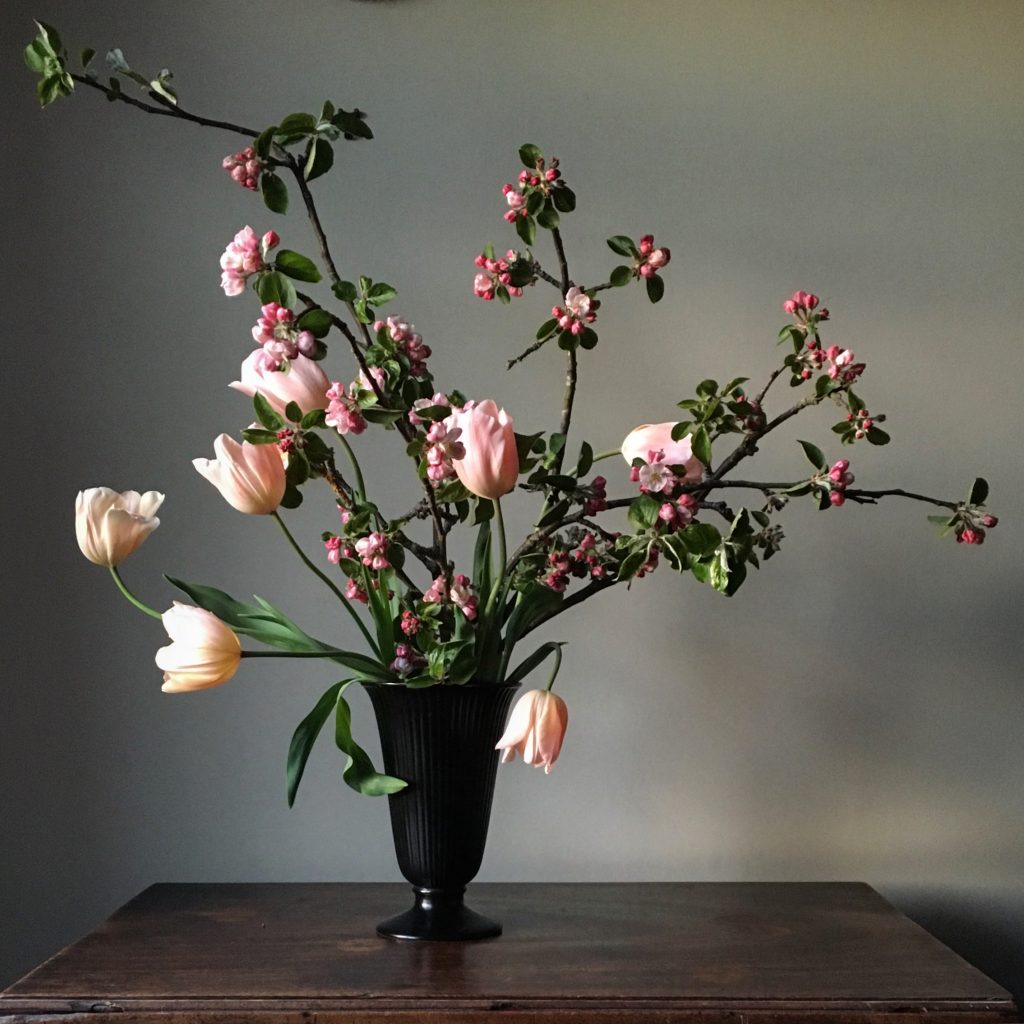Recently we had the opportunity to visit London Terrariums, an urban plant crafting outfit based in the bubbling city near Peckham. Heading the workshop is Emma Sibley, who for the past couple of years has made a name for herself by creating intricate gardening landscapes inside glass vessels. With roots based in Victorian times, terrariums and terrarium crafting has enjoyed a well deserved surge in interest, with urbanites being drawn to their individual living display beauty. Part of an overall trend towards merging city life with gardening and crafting, terrarium making relies on patience and delivers the pleasurable reward of creating individual ecosystems with the help of a few vital tools and a great deal of reliance on the earth’s bounty in the form of delicate plants. We spoke with Emma about how she came to discover terrarium making and how it guides her interests.
Friendly and open, Emma admits that once you make one, the urge to create another is at the ready. “It’s addictive. But in a good way.” She offers, smiling. “It’s horticultural therapy. Working with the soil and the plants is meditative and calming.” looking at the number of examples seated on the floor and on the shelves, you can quickly get an idea of why. The many different sizes of vessels are each filled with their own eco systems and vary in age and maturity. A quick glance reveals their exacting fruitfulness. Most of the vessels are corked tightly and reveal tears of humidity clinging the translucent sides. The translucency and the sealed environment is the perfect storm to consistently keep the plants at elevated temperatures and with a constant supply of water. The natural light streaming through the glass allows the greenery to photosynthesise. The result is a splendid and eye catching piece of plant candy for the home and living space. The kind our friend the pussy cat can never destruct on a whimsy.
Terrariums, a mini history
Kudos for its discovery belongs to Englishman Nathanial Bagshaward, who having visited Jamaica when he was young was immediately transfixed by the islands exotic tropicalia. When returning home he tried to bring back a few examples of the low growing ferns found abundantly in the near equatorial region. Unfortunately the specimens could not survive the travel, but Nathanial was a tenacious sort of bloke. Also a fan of insects, he had placed a moth chrysalis in a jar and left it accidentally unattended. When Nathaniel next looked he was wildly pleased and surprised to discover that blades of grass had formed from the base of the chrysalis and germinated into a plant. Thus began the discovery of the potential of growing plants in vessels, the birth of the terrarium. The concept quickly became the rage, and in many a fine Victorian residence could be found sometimes quite sophisticated terrariums, comprised of wood, glass and a great eye for ornate artistic detail. These were called Dwardian cases. More often than not, they contained tropical plants, due to their exotic status. The trend towards tropical plants is still evident today, with many a palm tree to be found all over London, adorning residences inside and out.
After a few decades, the trend declined but went resurgent in the seventies. And today now the cycle is renewed. All over the world, from Australia, the States and Europe, terrariums are the perfect vehicle to invite the outdoors in, all contained within a beautiful glass vessel. The best part is, they can be created by almost anyone with the know how and interest.
“My favorite part in what I do is the workshops.” Says Emma, who often offers several each month. Drawing predominantly females, Emma notes that it’s actually the men who may labor most intensely on their terrarium creation. “It’s gratifying to see a room full of people working often silently side by side on their terrariums.” Not unlike the art of flower arranging, there exists the idea that there is the optimal configuration to each piece. Using soil, sand, rocks, peat moss, perlite, plants and a variety of odd looking and provocative home made tools, crafters create their miniature world. An long lived desire for all the ages.
Emma’s own works are often housed in carboys, very large, heavy glass vessels often almost a meter in diameter that taper to very small openings of about 10 centimeters. They contain many differing plants- from ferns, orchids, mosses and host of other species to create substantial and impressive works of art. Making the segue from hobby to commercial entrepreneur, Emma was first asked by a friend to put some of the terrariums in her cafe. Soon customers were asking to buy them and then the commissions started to roll in. Every one is in fact a bit precious. Often the carboys must be sourced from auction houses or yard sales and of particular struggle is the delivery. You can’t easily pop them in the mail. Sometimes antique couriers are employed but often Emma handles delivery herself. “I have watched some of the large pieces get strapped into the front seat of people’s cars. It’s a little nerve wracking sometimes.”

Adding conceptual layers
Having a fine arts background, Emma studied silk screening. With a continued love for the arts, most recently she and fellow artists hosted the curated show “Holding the Vessel” featuring a collection of terrariums with particular significance on the way the vessel was displayed. Each concept was wildly different from the next, sometimes overtly defying gravity and logic.
From the many examples on display in the studio, one terrarium was entirely a a different variety of beast ” The fish tank without the fish” Emma remarked. It featured plants both anchored and floating the water- a universe of quiet and tranquility. There is beauty enough without confining a fish to live a lonely existence in a small glass bubble. We humans can do better don’t you think?
Bottles are for ships and gardens of Eden, created at the will of our own human hands. That’s beautiful and very turn of the century don’t you think?
You can Follow Emma, purchase a terrarium and attend her workshops by checking out:
London Terrariums website: LondonTerarriums.com
Email: Hello@LondonTerrariums.com
Instagram: @LondonTerrariums
